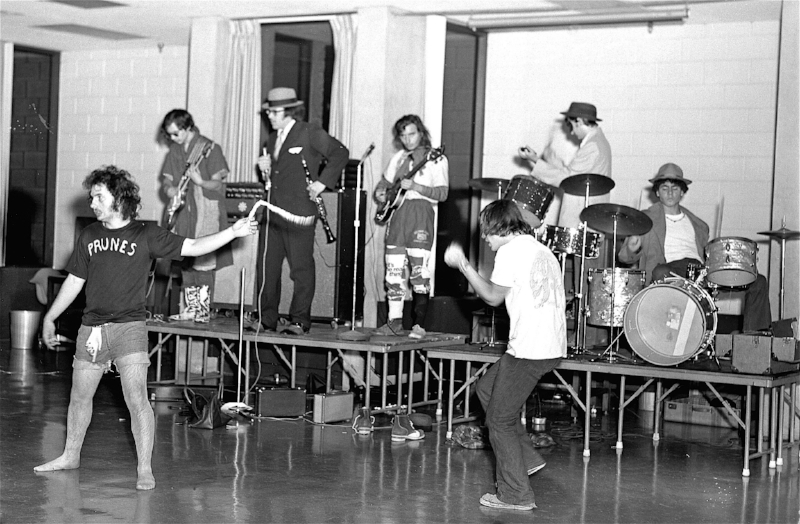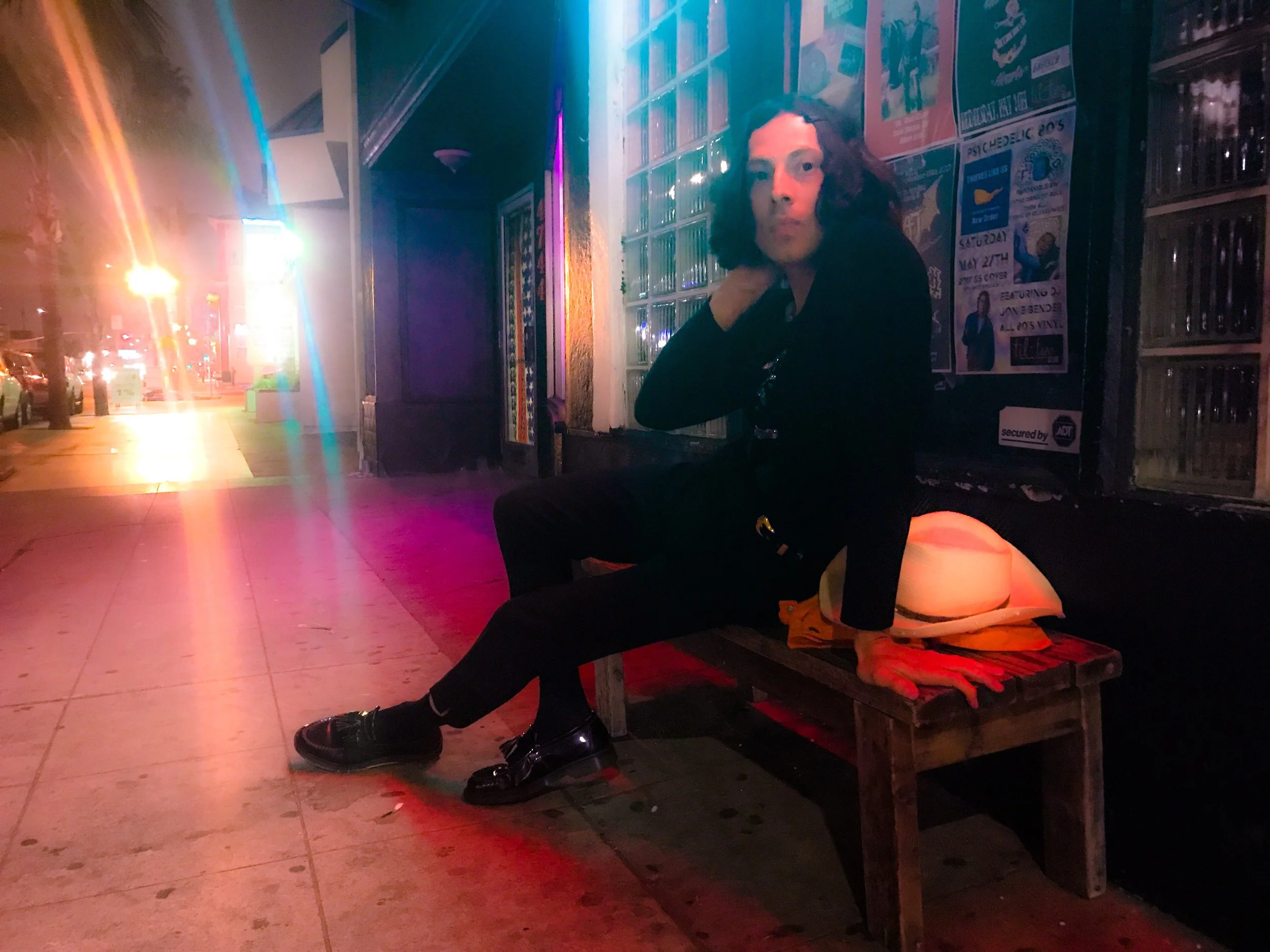Gary Wilson, Home Recording Pioneer, Talks Classic DIY Studio Gear
Gary Wilson is known the world over to a select audience not only for his fascinating biography, unique albums, and delightfully off-the-wall performances, but also as a trailblazer in the art of home recording. Gary was generous enough to share some background with us on his methods and equipment used in the early days of home recording sessions that led to classics You Think You Really Know Me and Forgotten Lovers, as well as his teen-aged Dr. Zork project.
Bobby Weirdo: What was the first piece of recording gear that you started with?
Gary Wilson: My brother had a paper route around sixth grade – maybe not even that old – and bought himself a Wollensak tape recorder, which was an industrial machine they used for schools. It was mono, and you still see it in [old] movies. My mother bought me a Sony stereo from an electronics catalog when I was around 13. It was a two-head machine.
BW: Was the stereo for home recording or for playing music?
GW: It was for playing music.
BW: And did you hook up an external mic to it, or how did you use it to as recording equipment?
GW: It was a deck for the stereo system, so it had no speakers. Sony made a bunch of those reel-to-reels for like a hundred bucks or something. It was a nice one. But my friend Bill Sloma's - who took a lot of photos, and you’ve probably seen them on your page - dad worked for McIntosh and would fix stuff for them. I remember their cellar was filled with big tube amps for McIntosh, which was based ten miles from Endicott. He also had a tube Altec Lansing mixer from the 40s or 50s that I would use once in a while because it had EQ (equalization) on it, which was hard to find, as well as two stereo Ampeg tape decks, probably from around 1959. They were three-head/three-motor machines, and they were a lot better than the Sony one I had.
I would often go over there, and he would let me borrow it so I would have two tape machines – the two-channel Sony stereo and the Ampegs, so I could feed the Sony into the Ampegs, and I also had line-in mic mixing on the Ampegs. So you could throw the line of one tape recorder into it, and because it had a mic input you could plug in a guitar or any other instrument, so I would superimpose sounds on top of each other. This was when I was twelve, thirteen, and fourteen.
In about twelfth grade, I moved on and got a four-channel Dokorder. It had all the frills you could imagine: Three heads, three motors, built-in echo, four channels, and sync. That was great, but you couldn’t get the sound. What you put in didn’t come out the way it should have. I would actually send it back from Endicott, New York. They were in Japan but had an office in California. I sent it back many times, saying that what I was putting in wasn’t coming out. It was six hundred bucks, which was a lot of money back then. I living at home, and playing with Peggy Lee’s piano player, so I could afford it. They went out of business. It wasn’t a good product, but it looked real cool.
I have a Dr. Zork tape that I may put out one day that was made on that machine. I would go up to SUNY, Binghamton University, where my brother was a student. There were [music] practice rooms, and I remember using an acoustic piano there [to record]. I was into Patty Waters at that time and trying to get a loose and flexible jazz trio [feel] that would follow the keyboard. I was still searching for who I was.
Then there was TEAC, which was already making four-channel recorders in Japan. The military was able to get hold of those. We’re talking the 60s and the early 70s. The one my friends and I bought was the A-2340, which was seven and a half ips (inches per second). It had three heads and three motors with sync, but what you put in came out. That was a great machine. They made two of them – one that actually had automatic reverse. It made a big difference. This was when I was around eighteen, and nineteen, and that’s what recorded You Think You Really Know Me and some of the tracks on Forgotten Lovers like “Sea Cruise” and “Chrome Lover”. That’s when I became Gary Wilson, actually.
BW: So you would record with the TEAC, but how would you mix your recordings?
GW: That was the thing. Mixers for consumers aren’t like they are nowadays -they were hard to find. Carmen Putrino - my best friend since about fifth grade - was in Lord Fuzz and an original Blind Date. He was a brilliant guy who – along with Bill Sloma the photographer- was talking about flat screen TVs in 1971. He was a real whiz kid who went on [to study at] Cornell University, and he built me a mixer so I could mix down and pan the tracks.
You had to work with what you had. I had a nice stereo back then with an EQ box, so I used to have to do funny things. With the four-channel TEAC, I could take a mic into one channel. Then take the output and plug that into reverb, EQ, or whatever I wanted to do, and throw that back into the third channel with the EQ. You had to use your imagination - it wasn't easy back then. Later, I got into using a Tapco mixer for equalization and built-in reverb.
BW: Was anyone teaching you and Carmen how to do these things?
GW: No, it was trial and error.
BW: What mics were you using back then?
GW: In the early days I had strange microphones. I had an Executone microphone, which a lot of schools used to use for their school stuff. The ones I used for most of my later stuff was an SM57, and I had an Electro-Voice RE10. Those were the two mics I used most of the time.
BW: This was in your late teens and early twenties?
GW: Yes. Those are the two mics I used for You Think You Really Know Me.
BW: And that’s for everything: Vocals, drums…
GW: Yeah, I still use the SM57 for drums. 57s are good for drums.
BW: How long ago did you sample the drums from your friend that you still use on your newer recordings?
GW: That’s from Rick Pernaveu, who was the Big City Blues Band drummer. He used to have his Ludwig drum kit at my house in the 80s, and that’s where I sampled it, so it’s a real snare drum and real bass drum. It was (Blind Dates bassist) Butch Bottino’s Casio drum machine. He bought a better one, so he let me have that one. It was nice because it had sampling and a fairly decent hi-hat. Sometimes a lot of those drum machines had crummy, sloppy hi-hat sounds.
BW: The whole sound is great.
GW: Yeah, the cymbals is the thing with a lot of those drums sets. If you got cheap hi-hats, they sounded cheap. I ended up with a Leedy and Ludwig set back east that I used on all those [early] tapes. I bought a couple Zildjian hi-hats, a ride, and I’d muffle the drums so they sounded decent. I painted them with house paint -- orange and yellow and green. My friends told me that would ruin the drums and wreck the value of the set. I didn't listen, and it didn't ruin the sound.
Significantly, Peanut Butter Wolf once said this about Gary and his recording equipment: "I definitely was reading up on the equipment he was using and trying to take notes, but I think you could give him any kind of equipment....it's more his mind." And as fun as the vintage gear talk is, we couldn't agree more. We intend on continuing to enjoy the mind of Gary Wilson for a long time to come, and hope you do too.
-BW









